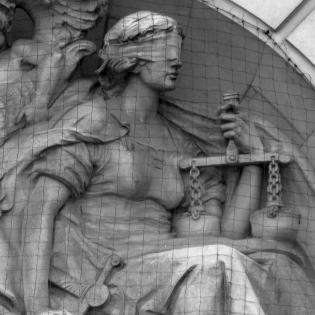Fair Trade
Grades:
6, 7, 8
Subjects:
Keywords & Concepts:
Learners read about and discuss Fair Trade and how it relates to justice, fairness, and equity.
Duration
PrintOne 20-minute lesson
Objectives
The learner will:
- discuss the principles of fair trade.
- relate fair trade to justice.
Materials
- a printout of the handout below: Fair Trade Symbol or access to the Internet to display the symbols of fair trade
- copies of the handout How Can You Act Fairly with Your Spending?
Bibliography
- Fair Trade Federation--building equitable and sustainable trading partnerships and creating opportunities to alleviate poverty https://www.fairtradefederation.org/
- Global Exchange--Human rights organization promoting justice around the world https://globalexchange.org/
- World Fair Trade Organization--the voice of fair trade and the guardian of fair trade values https://wfto.com/
- Fair Trade Labeling Organizations International--a group of 24 organizations working to secure a better deal for producers https://www.fairtrade.net/
Instructions
Print
Anticipatory Set
Show the global symbol for a Fair Trade organization. Discuss what that means. Fair Trade organizations represent artists, farmers, and others around the world to make sure they get paid a fair wage for their work.
Working in small groups, learners read about fair trade online and on the handout How Can You Act Fairly with Your Spending? and discuss the questions.
Reflect on the discussion as a whole group. Discuss whether fair trade is related to justice, fairness, or equity and what they can do with their money for the common good.
Philanthropy Framework
-
Strand PHIL.I Definitions of Philanthropy
-
Standard DP 01. Define Philanthropy
-
Benchmark MS.1 Define philanthropy as individuals and organizations providing their time, talent, and/or treasures intended for the common good throughout history and around the world. Give examples.
-
Benchmark MS.4 Give examples of how individuals have helped others.
-
-
Standard DP 02. Roles of Government, Business, and Philanthropy
-
Benchmark MS.1 Describe how different needs are met in different ways by government, business, civil society, and family.
-
Benchmark MS.2 Give examples of needs not met by the government, business, or family sectors.
-
Benchmark MS.5 Explain why economic freedom is important to the civil society sector.
-
-
-
Strand PHIL.II Philanthropy and Civil Society
-
Standard PCS 01. Self, citizenship, and society
-
Benchmark MS.2 Discuss why some animals and humans will sacrifice for the benefit of unknown others.
-
Benchmark MS.4 Describe the characteristics of someone who helps others.
-
-
Standard PCS 02. Diverse Cultures
-
Benchmark MS.4 Identify civil society organizations that protect and speak for minority viewpoints.
-
-
-
Strand PHIL.III Philanthropy and the Individual
-
Standard PI 01. Reasons for Individual Philanthropy
-
Benchmark MS.5 Describe the responsibility students have to act in the civil society sector to improve the common good.
-
-
